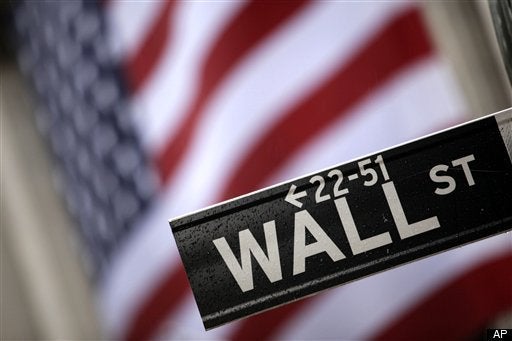
Former top officials at the Securities and Exchange Commission did little Wednesday to affect the overall perception that the agency failed in its mission to supervise large investment banks.
For starters, Christopher Cox, the agency's much-maligned former chairman during the George W. Bush administration, referred to the SEC's Consolidated Supervised Entities program, with supervisory powers over large firms like Bear Stearns, Lehman Brothers and Merrill Lynch, as a "review" program Wednesday during testimony before the Financial Crisis Inquiry Commission.
The CSE program was reliant on firms to provide data and documents, Cox said, which CSE examiners reviewed.
This unit was designed to act as a "prudential regulator" over all the operations of firms like Goldman Sachs, Merrill, Bear, Lehman and Morgan Stanley, Donaldson told the FCIC. In other words, it was supposed to regulate the firms much like bank regulators oversee banks.
But the unit -- nor the SEC, for that matter -- had the resources to do the job.
The FCIC's chairman, Phil Angelides, noted that the unit had between 12 to 15 staffers assigned to it when the program was first launched in 2004 under former SEC chairman William H. Donaldson, and rose to just 24 staffers by 2007 under Cox.
Under questioning, Donaldson told the FCIC that the SEC was "tremendously understaffed." The number of agency employees, Angelides noted, totaled about 3,000 before Donaldson took over. It subsequently rose to 4,000 before eventually dropping to about 3,500 during Cox's tenure, he said.
Cox told the commission that the agency's primary oversight unit had "about 200 people" for "5,000" firms.
Asked if he ever requested more resources, Cox said no. Pressed further by Angelides, Cox admitted that he asked for more manpower "days after" Bear collapsed in March 2008 -- but not before. Its collapse "caught the whole world by surprise," Cox said. Short-sellers and investors buying insurance in case the firm collapsed in the form of credit default swaps may beg to differ.
Donaldson told the panel investigating the roots of the worst financial crisis since the Great Depression that the SEC had "no experience" regulating large financial firms. Its experience lay in investor protection, he told panel commissioner Brooksley Born. He added that the CSE program failed to achieve its "architectural objective," which was to serve as an "early warning system."
The examiner in charge of the Lehman Brothers bankruptcy, which occurred at the height of the financial crisis in September 2008, said in his March report this year that the SEC had the legal authority -- and responsibility -- to apply more stringent oversight to firms like Lehman and Bear. Current and former agency officials have argued that the agency's hands were tied because the CSE program was viewed as being largely voluntary.
Cox eliminated the program in 2008 after the agency's internal watchdog listed numerous problems with it.
Congress, at the prodding of the Obama administration, is looking to pass legislation mandating the creation of another such "early warning system" unit to oversee large, systemically-important financial firms. Members of Congress and administration officials promise that this unit will be different from the federal government's previous attempts to regulate such institutions.
Cox told the panel that supervisors tend not to be "enforcers" of rules and regulations, echoing a claim made by former Federal Reserve Chairman Alan Greenspan, who told the panel last month that the Fed didn't have enforcement capabilities when regulating financial firms. Cox mentioned Greenspan's claim in defending the SEC's track record.
At another point in the hearing, Donaldson told the panel that the agency never had the "authority" to limit a firm's leverage.
Bear Stearns's assets ballooned from about $185 billion to nearly $400 billion in 2007 over just a few years, noted Commission chairman Phil Angelides. The firm had a 2007 year-end 38 to 1 ratio of tangible assets to tangible common equity (essentially it had just $1 to support every $38 in assets like loans and securities). Bear had a "significant concentration" of its assets locked into mortgages and mortgage-linked securities, much of it in the form of no-documentation and other crummy loans, Angelides continued. In fact, the value of those risky loans -- more than $12 billion -- was greater than the firm's total equity. If the value of those assets slipped, the whole firm would be in jeopardy.
In short, the firm was incredibly over-leveraged, a point conceded, in hindsight, by former longtime chairman and chief executive officer James "Jimmy" Cayne earlier in the day during testimony before the panel.
Underscoring the SEC's apparent failures, the former head of the agency's oversight unit, Erik R. Sirri, said the firm "certainly" had the capability to judge firms' risk management practices and exposures to various classes of assets, funding sources, counterparties and the like.
It seems, though, that those tools weren't used prior to the worst crisis in more than 70 years.
To ensure the nation's financial system never again experiences such a violent disruption, the Obama administration and Democrats in Congress propose to give regulators more authority.
How they use it, though, is largely up to them.
